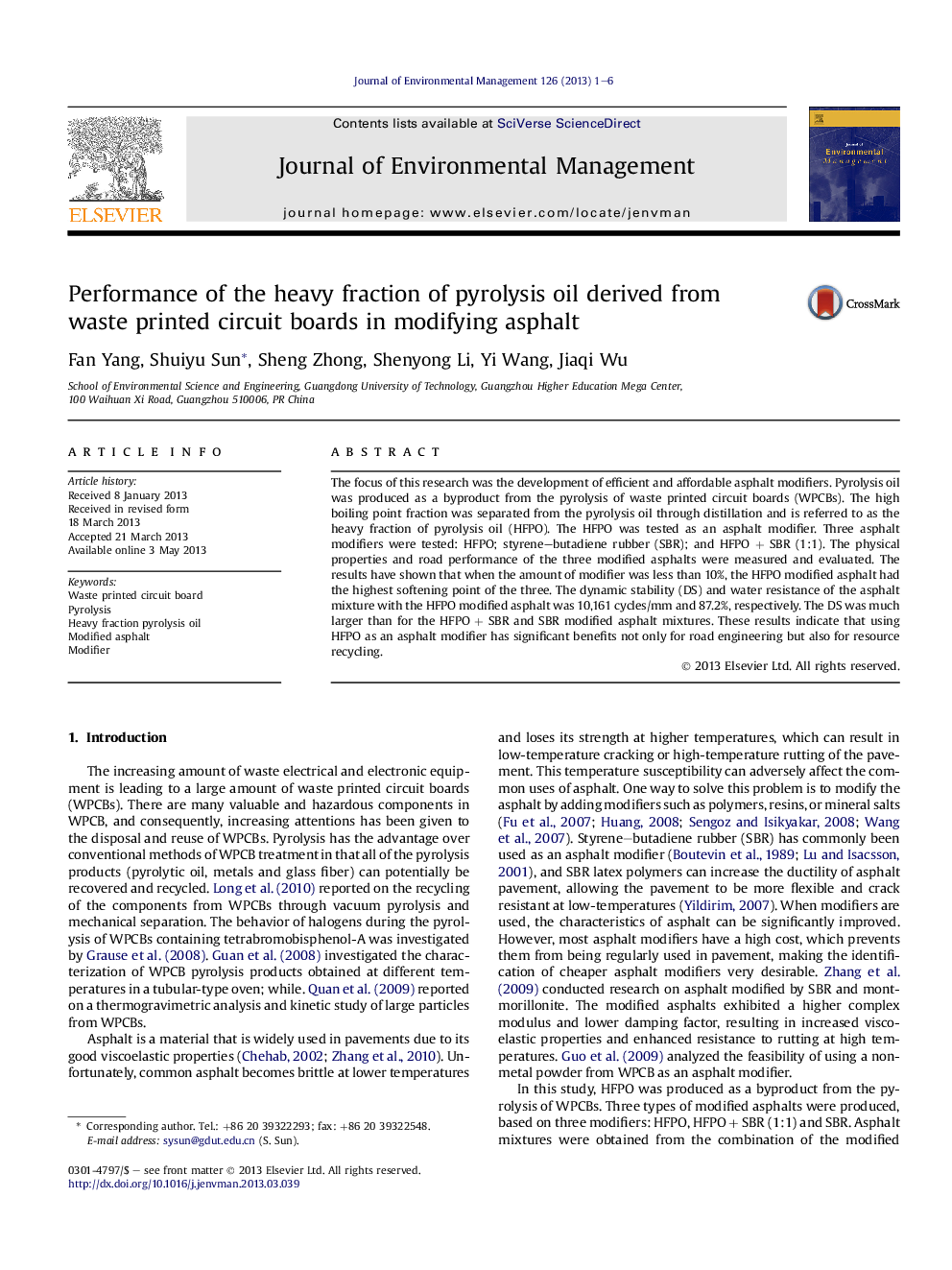| Article ID | Journal | Published Year | Pages | File Type |
|---|---|---|---|---|
| 7484162 | Journal of Environmental Management | 2013 | 6 Pages |
Abstract
The focus of this research was the development of efficient and affordable asphalt modifiers. Pyrolysis oil was produced as a byproduct from the pyrolysis of waste printed circuit boards (WPCBs). The high boiling point fraction was separated from the pyrolysis oil through distillation and is referred to as the heavy fraction of pyrolysis oil (HFPO). The HFPO was tested as an asphalt modifier. Three asphalt modifiers were tested: HFPO; styrene-butadiene rubber (SBR); and HFPOÂ +Â SBR (1:1). The physical properties and road performance of the three modified asphalts were measured and evaluated. The results have shown that when the amount of modifier was less than 10%, the HFPO modified asphalt had the highest softening point of the three. The dynamic stability (DS) and water resistance of the asphalt mixture with the HFPO modified asphalt was 10,161Â cycles/mm and 87.2%, respectively. The DS was much larger than for the HFPOÂ +Â SBR and SBR modified asphalt mixtures. These results indicate that using HFPO as an asphalt modifier has significant benefits not only for road engineering but also for resource recycling.
Related Topics
Physical Sciences and Engineering
Energy
Renewable Energy, Sustainability and the Environment
Authors
Fan Yang, Shuiyu Sun, Sheng Zhong, Shenyong Li, Yi Wang, Jiaqi Wu,
